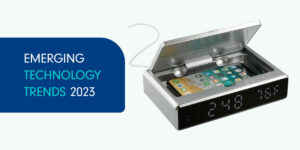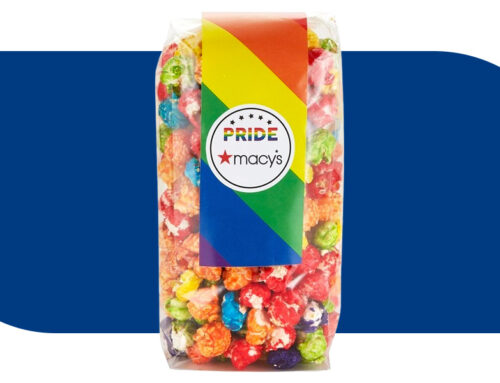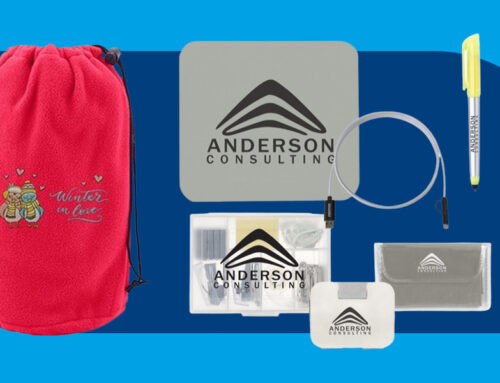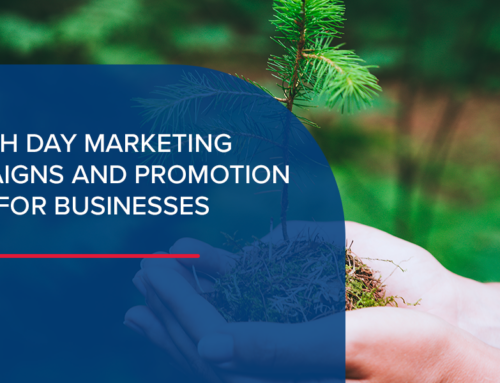12/09/2019
The Benefits of Using Promotional Products for Your Business
Promotional products are a powerful tool to increase your brand recognition, generate leads, and ingratiate your business to consumers. What may appear as a simple branded tote, mug, or t-shirt is actually a highly strategic and effective advertising strategy. To be clear, this isn’t just “stuff”, but tools to help your business stay relevant in the consumer’s mind, and to grow. Doing the right research and knowing your customer goes a long way in an effective promotional products campaign. In this piece we’ll discuss some of the biggest benefits to using promotional products, including answering a few key questions, such as:
• How many people can you actually reach with promotional products?
• How long do promotional products truly stick around?
• What do promotional products cost? What kind of return on investment do they yield?
• Do consumers even like promotional products?
And perhaps the most burning question of all,
• Do promotional products translate into actual business?
Keep reading for answers to all of these questions, which are backed up by data from numerous studies on the subject.
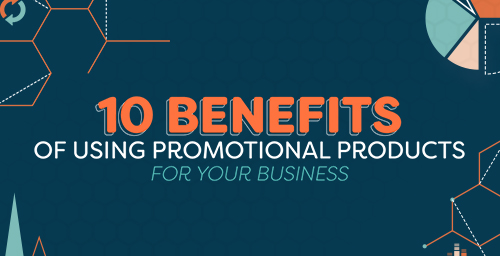
Promotional Products Cast a Wide Net over Consumers
Promotional products have a magical way of reaching a ton of people. It’s estimated that 8 in 10 consumers own between 1 and 10 promotional products; and that 50% of people use a promotional product daily. Unlike other forms of advertising, such as TV commercials and billboards, promotional items have incredible staying power – literally, as they take up tangible space in a person’s home, car, office, etc., and serve as daily reminders of your brand. They’re also advertising tools consumers actually engage with, like drinking from a branded mug or writing with a customized pen. On the other hand, once you see or read an advertisement in a magazine or online, your interaction is complete just a few seconds later. And while a catchy jingle or creative advertisement can certainly generate buzz (not to mention the huge expense of creating and executing them), promotional products are a simple yet effective way to make a memorable impression on consumers. In fact, a whopping 89% of consumers can recall the name of a brand for up to 24 months after receiving a promotional item bearing it. That’s incredible, especially when considering promotional items are a fraction of the cost of other forms of advertising – but we’ll get into the numbers later.
Promotional Products have Real Staying Power
We mentioned above that one of the greatest benefits of promotional products is their staying power; how they live alongside consumers — for example, magnets on fridges, calendars in offices, USB keys in briefcases, etc. The unique ability to interact and serve a useful function in consumers’ lives is just so fundamentally different than other styles of advertising. But of course, promotional products can only have staying power if consumers keep them – and the stats prove they do. Studies show a mere 15% throw promotional products away after receiving them. The other 85%? They’re either keeping them for themselves or passing the items along to someone else – extending your brand reach. Some other amazing facts to back this up: 91% of consumers have at least one promotional item in their kitchen; 74% have at least one in their office space; and 55% have at least one in their bedroom. These numbers speak for themselves – yes, it’s quite clear people are keeping their promotional products!
Promotional Products Lifespan in Consumers’ Lives
The lifespan of promotional products depends on the type of item, but on average promotional products are kept for about seven months. Here’s a look at the lifespan of a few specific items (all of which are well over this average):
• Outerwear: 16 months
• Umbrellas: 14 months
• T-shirts: 14 months
• USB drives: 13 months
• Drinkware: 12 months
• Bags: 11 months
• Headwear: 10 months
• Writing instruments: 9 months
• Calendars: 8 months
These numbers are great, but it actually gets better. Not only do consumers keep promotional products about a year, but 63% of them pass along their promotional products when they are finished with them. That means the above-listed products (and others) get an entire second (or third!) life after the original owner has moved on from them. And of course, your brand recognition only continues to stretch as it makes its way into new homes, offices, etc…all on the back of your branded promotional item.
The Promotional Products More Likely to be Seen by the Most People
So far we’ve talked about how promotional products capture, engage, and live with consumers, but there’s another side to them: the impressions they garner. When a consumer wears or uses your branded product they shift from just a consumer to an ambassador who is helping to spread your reach – how many people actually see your company name or logo (whichever you have branded on your promotional product), which are also referred to as impressions. Impressions are calculated by multiplying the average length of time a person keeps a promotional item by the amount of people who will come across the product while it’s in use. For this reason, items used in public generate the most impressions. Outerwear brings in more impressions than any other item, clocking in about 6,000 (!) per piece. This knocks out bags, which used to generate the most impressions – and while they may not bring as many as they used to, they still bring in over 3,000 impressions (and it’s worth noting, bags are much cheaper than jackets, making them a highly valuable promotional item). Other wearables, namely t-shirts and hats, bring in an average of 3,400 impressions per item. Although, if your focus is to get the most impressions possible, you don’t have to necessarily go with a wearable. The good ole’ trusty pen brings in a staggering 3,000 impressions.
Pairing Promotional Products with Your Industry
Promotional products can fit in nearly any business sector, though they are the most popular in education, finance, not-for-profits, health care, and construction. Below, we’ve mapped out some of the most popular items for each of these:
• Education – pens, journals, water bottles, Frisbees®, wearables (t-shirts and hats)
• Finance – piggy banks, stress balls, calendars, pens, mugs
• Not-for-profits – calendars, bags, travel accessories
• Health care – first aid kits, pill boxes, hot/cold packs, stress balls
• Construction – magnets, tape measures, bags, to-go tumblers, hand sanitizers
A promotional product should speak to your business, after all, it’s going to represent it for about a year (or more) while it’s in use. Consumers should be able to make the connection of the product to your brand. While there is a lot of leeway here, the item you choose should be useful and valuable to your target customer – just like your business.
Promotional Products Aren’t as Pricey as You May Think
We promised we’d get down to the dollars and cents of promotional products – and can we just say the numbers look really good? Promotional products don’t cost as much as you may think. In fact, the average price per item is about a dollar. But there is a lot of variation in that number. Items can be as inexpensive as 10 cents per item. Of course, you can spend way more (into the hundreds and up), which is an attractive avenue to explore when looking for high-end promotional gifts – but not necessarily when looking to give away hundreds of items at a big convention, for example.
There’s another important angle to consider when discussing the cost of promotional items – the return on investment each product can bring. Promotional products have a greater return on investment than any other form of advertising (and are 66% more cost-effective, for example, than magazine ads and TV commercials). This claim is made by quantifying the cost per impression they garner. The cost per impression, or CPI, means the amount of money it costs to actually get your item (in this case, your name/logo on a promotional product) seen. The average CPI is only $.004 per impression. This is, hands down, the cheapest form of media. To compare, following is the cost of those other media options.
• Internet advertisements cost about .7 cents per impression
• Targeted mobile costs about 1 cent per impression
• Prime time TV advertisements cost about 2.5 cents per impression
…these are way more expensive than the average CPI for promotional goods, and they don’t have the longevity a tangible product, such as a mug, has in the home/office of your target consumer.
Consumers Like Promotional Products
It’s no secret people enjoy receiving gifts, which is what a promotional item is — a gift to consumers in a bid to win them over and hopefully gain their business, trust, and loyalty. Promotional items that are valuable to a person’s life — something they can use and/or enjoy, like a to-go tumbler — are appreciated by consumers. To put some numbers around it, 83% of people appreciate receiving promotional products. This is great news, of course. Even better — 25% of people report having a more favorable view of a business after receiving a promotional item. This more favorable view equates to a stronger chance of earning that person’s business, and/or having them tell friends, family, and/or colleagues about your product/service. And to add a little icing to the cake: 48% of consumers would like to receive promotional products more often when receiving advertising messaging. GIVE THE PEOPLE WHAT THEY WANT!
Promotional Products Bring in Actual Business
Okay sure, people enjoy getting promotional products, because they like free stuff and receiving unexpected little gifts. But how does this translate to actual business? Can promotional items actually affect your sales? In a word, yes. In two, yes, absolutely. We all know promotional items increase brand recognition and are a powerful tool for generating leads. They serve as quiet, constant reminders of your business without being pushy or frankly, annoying. Consumers will think of your company when they need a product or service you offer, without you constantly needing to jump in front of their faces. But perhaps the real magic of them is this: a study found that before receiving a promotional product, 55% of people had done business with the advertiser. After receiving a promotional product, that number jumped up to 85%.
Promotional products can be a goldmine in your marketing strategy. They’re a powerful tool for integrating your brand into consumers’ everyday lives. A (very expensive) commercial will last 30 seconds (if a viewer doesn’t simply click past it), but a magnet, pen, or t-shirt can actually live in their homes for a year – and get recycled to another home after that. And we know we’ve already said this, but it bears repeating – promotional products come at a fraction of the cost of other advertising avenues. They’re appreciated by consumers and they’re effective.
Are you ready to get your promo gear lined up? Reach out to ePromos. Our 110% guarantee promises you’ll love your promotional products as much as we do. Our talented team is available to walk you through each step of the process, from brainstorming the perfect item to represent your brand, to finessing the artwork. Get in touch today to get the most for your marketing dollars!
Sources
https://inkwellusa.com/blog/5-benefits-promotional-products-branding/
https://www.candbmarketing.com/benefits-of-promotional-products
https://www.wepromoteyoumarketing.com/blog/25-insane-facts-about-promotional-products
https://www.forbes.com/sites/allbusiness/2017/12/14/branded-giveaways-and-other-promotional-products-do-they-still-have-an-impact/#57584fe87790
https://media.asicentral.com/resources/impressions-study-2016.pdf
https://www.godelta.com/blog/are-promotional-products-worth-the-money
http://www.promotionalproductswork.org/media/1217/law_2018propro-factsheet.pdf
https://www.asicentral.com/news/web-exclusive/january-2019/2019-ad-impressions-study/

